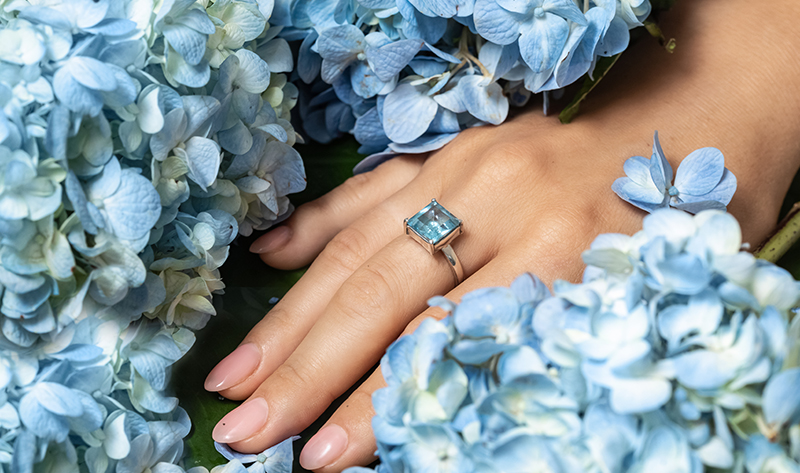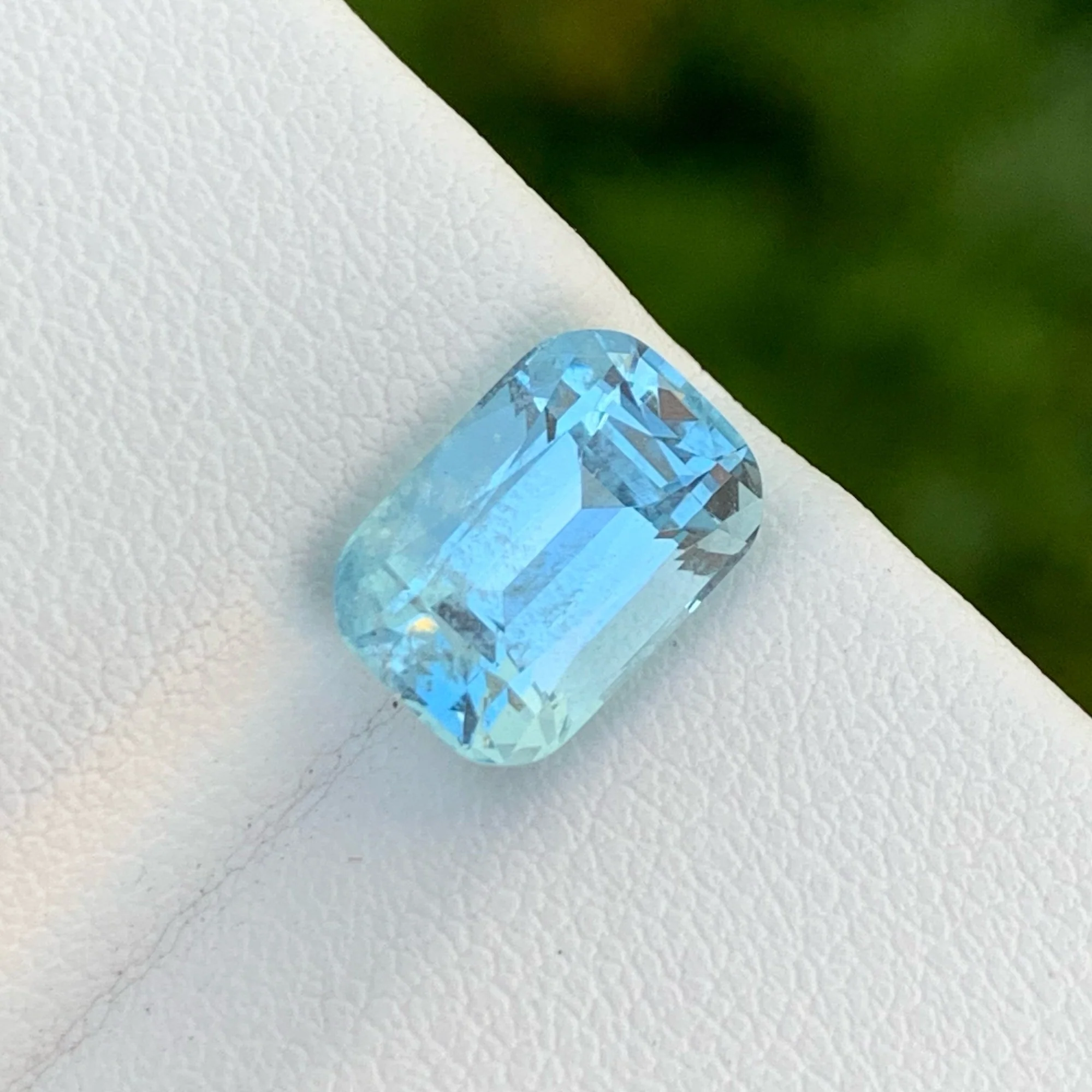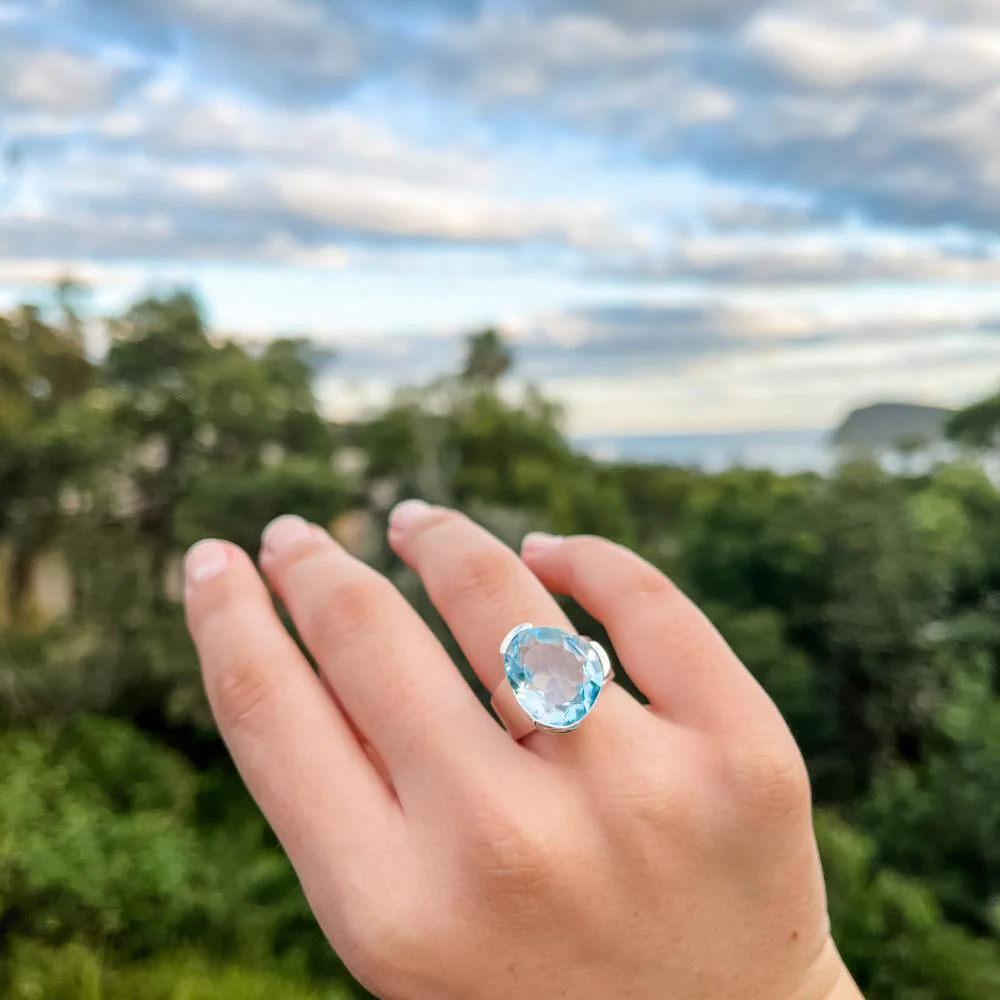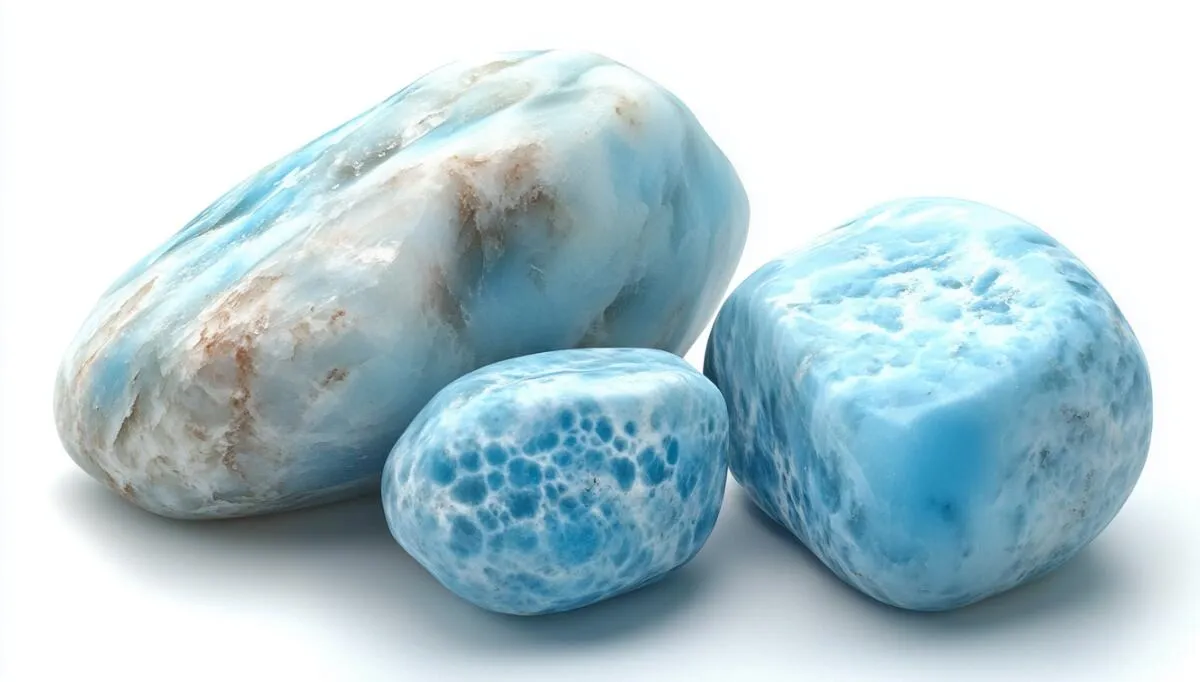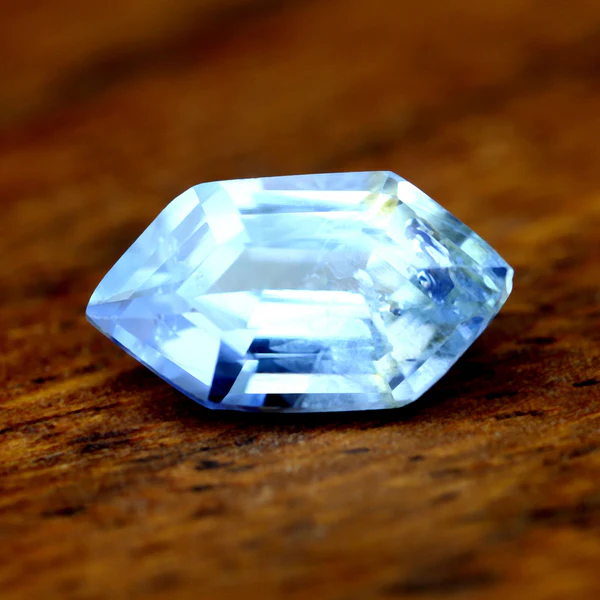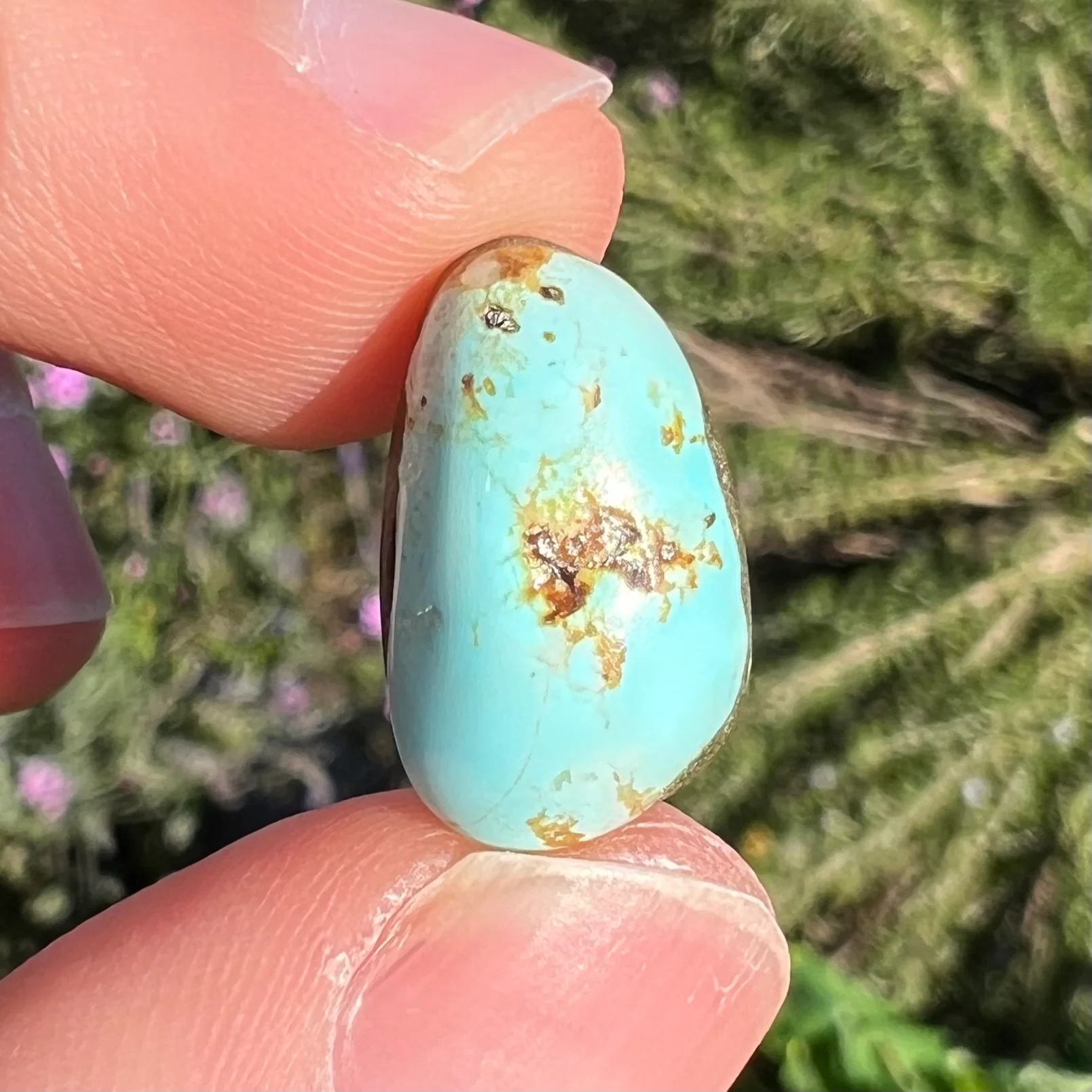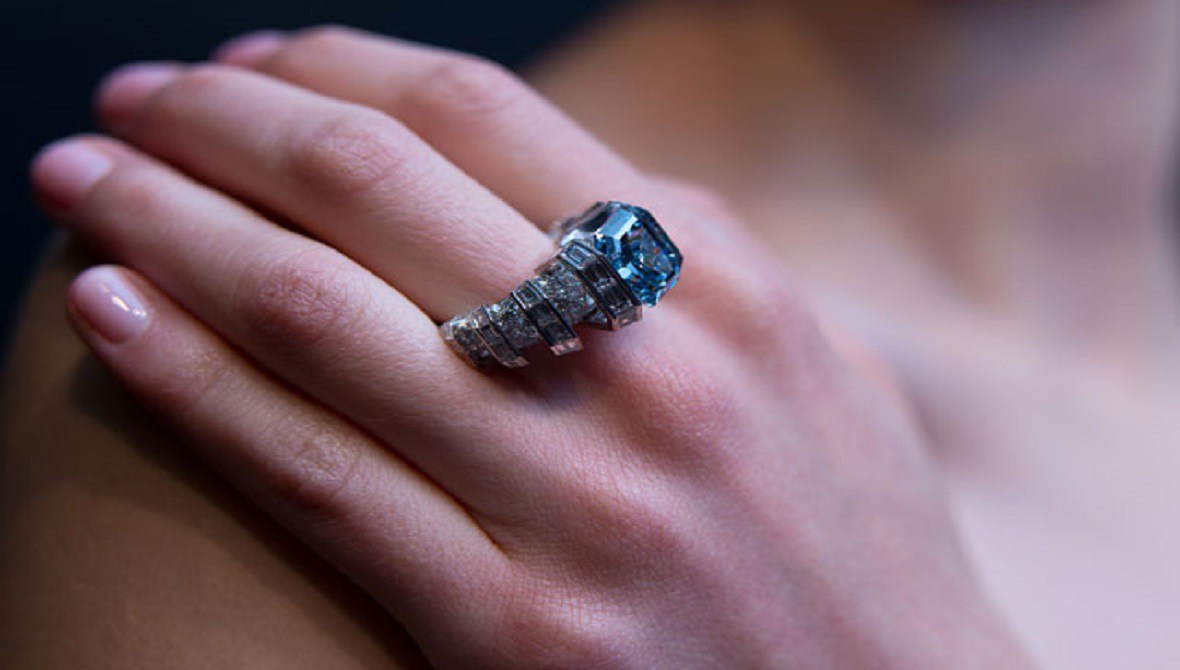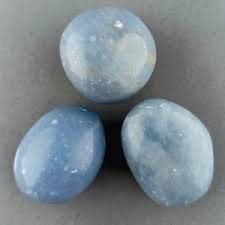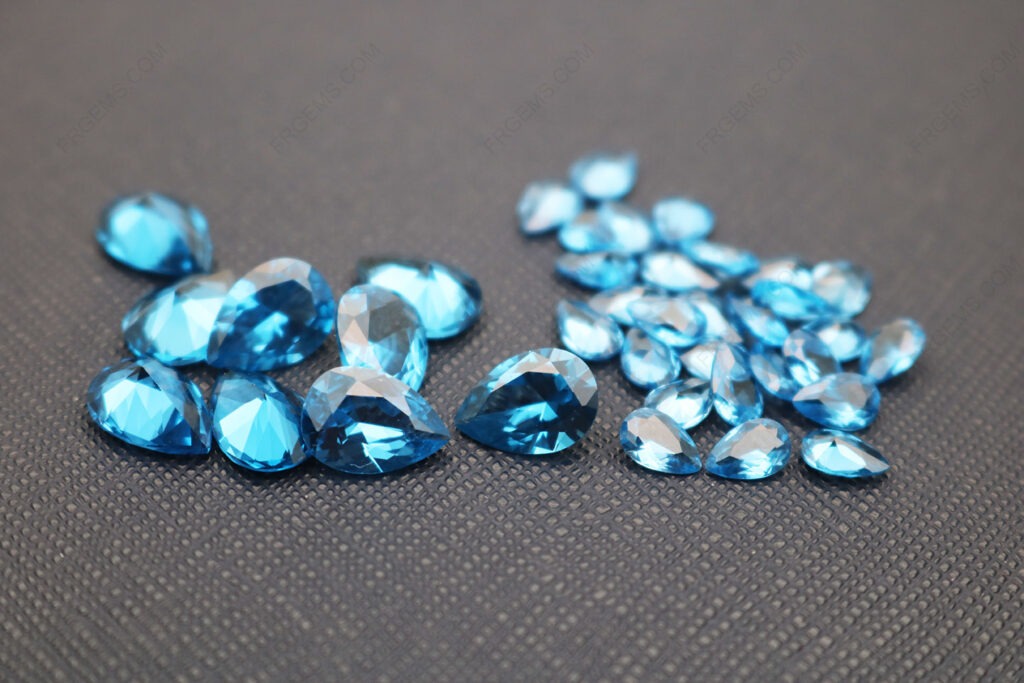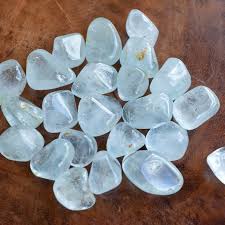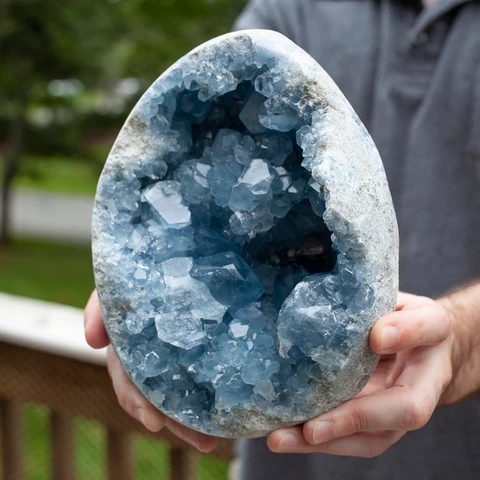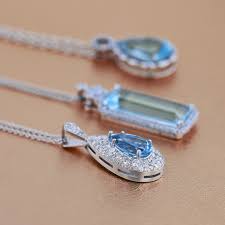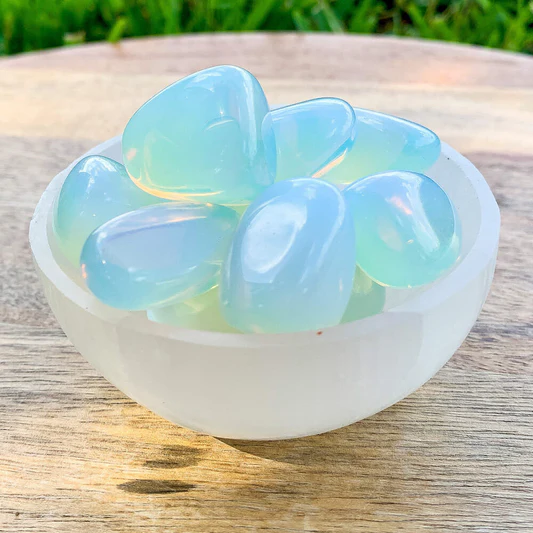
People are drawn to pale blue gemstones because of their ethereal beauty and their delicate, peaceful hues, which evoke feelings of peace and tranquillity. Pale blue gemstones have something special to offer, regardless of your interest in metaphysical qualities, your passion for gemstone collecting, or your simple admiration for these gorgeous stones' beauty.
The charm of these uncommon gems, their historical significance, and how to pick the ideal pale blue gemstone for you are all covered in this article. From the calming hues of aquamarine to the ethereal aura of larimar.
What Are Pale Blue Gemstones?
Pale blue gemstones are distinguished by their gentle, light blue tones that convey tranquility, purity, and clarity. These stones are often lighter in color than their deeper blue cousins, making them appear more delicate and therefore more desirable for their gentle grace. The hue is frequently caused by trace components or the gemstone's inherent makeup, and it often adds to the gemstone's overall appeal.
While blue gemstones are among the most sought in the world, pale blue gemstones stand out due to their scarcity and soft beauty. Pale blue stones' appeal stems from their relaxing, almost ethereal colors, which make them ideal for both fine jewelry and spiritual use.
The Full Spectrum Of Pale Blue Gemstones
1. Aquamarine
Aquamarine is the best-known pale blue gemstone, recognized for its cool, ocean-like hue. It belongs to the beryl family and has a mineral structure similar to that of emeralds.
- Unique Qualities: Clear, brilliant, and often cut in a variety of shapes, aquamarine’s pale blue shades can range from transparent light blue to deeper, greenish-blue hues.
- Historical Significance: In antiquity, aquamarine was regarded as a stone of good luck, especially for sailors, offering protection during sea voyages.
- Uses: Widely used in fine jewelry, aquamarine is a popular choice for engagement rings, necklaces, and earrings due to its clarity and durability.
2. Blue Topaz
Blue topaz, which is often heat-treated to enhance its color, comes in a variety of pale blue to darker blue tones. It's one among the most reasonably priced blue gemstones accessible. Topaz ringsfeaturing this gemstone are particularly popular for their affordability and brilliance, making them a favorite choice for jewelry enthusiasts.
- Unique Qualities: Blue topaz is known for its brilliance and clarity, which can be emphasized through faceting.
- Historical Significance: In the past, blue topaz was believed to have healing powers, such as calming tempers and soothing stress.
- Uses: Commonly used in a variety of jewelry, including rings, bracelets, and pendants. Its affordability makes it a popular choice for everyday wear.
3. Larimar
Larimar is a rare gemstone found only in the Dominican Republic, known for its magnificent pale blue to blue-green color and distinctive patterns that resemble ocean waves.
- Unique Qualities: Larimar's pale blue hue is accented with white swirls and patterns, giving it an ethereal and fluid appearance. It is often described as "the stone of the Caribbean."
- Historical Significance: The stone was discovered in the 1970s and named after a combination of the founder’s daughter’s name (Larissa) and the Spanish word for "sea" (mar).
- Uses: Larimar is popular in jewelry designs, especially in pendants and earrings. Its exotic appeal makes it a desirable choice for collectors.
4. Blue Sapphire
While blue sapphires are known for their deep blue color, certain rarer specimens display a light, pale blue shade, especially those with minimal inclusions.
- Unique Qualities: Blue sapphires are very durable (9 on the Mohs scale) and are noted for their toughness and ability to endure scratches. The pale blue sapphiresare particularly admired for their delicate, translucent tint.
- Historical Significance: Sapphires have long been associated with royalty and have symbolized wisdom, loyalty, and nobility. They were once considered a divine stone, believed to protect their wearer from envy and harm.
- Uses: Pale blue sapphires are often set in high-end jewelry, including engagement rings and heirloom pieces.
5. Turquoise
Turquoise is one of the oldest known gemstones, prized for its distinctive blue to greenish-blue hues. Though turquoise stones can vary in hue, the pale blue kind is especially popular. Turquoise jewelryhas long been cherished for its timeless beauty and cultural significance, often featured in necklaces, bracelets, and rings.
- Unique Qualities: Turquoise has a smooth, waxy texture and often features matrix patterns, veins of darker minerals running through it that make each piece unique.
- Historical Significance: Highly prized by ancient civilizations such as the Egyptians and Native Americans, turquoise is believed to bring protection, good fortune, and healing.
- Uses: Turquoise is commonly used in Southwestern and Native American jewelry designs, particularly in rings, necklaces, and bracelets.
6. Blue Diamond
Blue diamonds, one of the world's rarest and most valuable jewels, have a faint blue tint caused by the presence of boron inside the crystal structure.
- Unique Qualities: Blue diamonds are exceptionally rare and are renowned for their brilliance and rarity. Their pale blue shade can range from faint blue to a deeper, more vivid hue.
- Historical Significance: The Hope Diamond, one of the most famous blue diamonds, is believed to carry a curse but also has a long history of being associated with royalty and wealth.
- Uses: Blue diamonds are often set in high-end engagement rings and are highly valued by collectors and investors alike.
7. Iolite
Iolite is a beautiful pale blue gemstone with a subtle violet tint, often referred to as "the Viking's compass" because it was historically used to help navigate the open seas.
- Unique Qualities: Iolite displays a distinct pleochroism, meaning it can appear in different shades depending on the angle of the light. The pale blue hue is the most common.
- Historical Significance: Vikings are said to have used thin slices of iolite as a polarizing filter to locate the sun and navigate on cloudy days.
- Uses: Iolite is used in a variety of jewelry pieces, including rings, earrings, and pendants. It’s often cut to emphasize its rich colors.
8. Spinel
Spinel, though more commonly found in red or pink shades, also comes in pale blue varieties, which are prized for their clarity and brilliance.
- Unique Qualities: Spinel is a durable gemstone with a high level of brilliance, especially in pale blue hues. It can also come in various other colors, but blue spinels are relatively rare.
- Historical Significance: Spinel has been mistaken for ruby throughout history. Notably, the "Black Prince's Ruby" in the British Crown Jewels is actually a spinel.
- Uses: Pale blue spinel is used in fine jewelry, particularly in engagement rings and necklaces, and is gaining popularity among collectors.
9. Topaz (Natural)
While blue topaz is commonly heat-treated, natural topaz also comes in pale blue shades, albeit in less common forms. These stones are typically more expensive than their heat-treated counterparts.
- Unique Qualities: Natural pale blue topaz is often found with a more muted, softer color compared to heat-treated blue topaz. It can also display unique inclusions that add character to the stone.
- Historical Significance: Topaz has long been considered a stone of strength, healing, and vitality. It was also believed to bring long-lasting love and protection.
- Uses: This gemstone is used in both fine and costume jewelry, often set in pendants and rings.
10. Celestite
Celestite, also known as celestine, is a pale blue to colorless mineral, often used for its spiritual properties. It is found in large, crystal clusters and is prized for its calming energy.
- Unique Qualities: Celestite is a soft mineral (Mohs hardness of 3–3.5) and is known for its light blue hue and delicate crystal formations. It often has a translucent quality.
- Historical Significance: Celestite is believed to have a strong connection to the divine and spiritual realms. It is often used in metaphysical practices, particularly for enhancing meditation.
- Uses: While not as commonly used in traditional jewelry due to its softness, celestite is a popular choice for collectors and metaphysical enthusiasts.
11. Aquamarine (Synthetic)
Synthetic aquamarine is a lab-grown alternative to natural aquamarine, possessing nearly identical physical properties but at a more affordable price.
- Unique Qualities: Synthetic aquamarine retains the same crystal structure and vibrant pale blue color as natural aquamarine, making it a popular alternative for those on a budget.
- Historical Significance: While synthetic gemstones have only been developed in recent decades, their creation has allowed more people to experience the beauty of aquamarine without the high cost.
- Uses: Often used in costume jewelry, synthetic aquamarine can be found in rings, pendants, and earrings.
The Formation And Rarity Of Pale Blue Gemstones
Pale blue gemstones are formed under specific conditions, often in unique geographical locations. For example, aquamarine forms in granitic rocks under high pressure, while turquoise forms in arid regions as a result of the interaction between copper and phosphates. The rarity of these gemstones is often tied to both their geological formation and their limited availability.
Some pale blue gemstones, like aquamarine, are more widely available and come in a range of shades. Others, like larimar, are extremely rare, making them highly prized by collectors. The scarcity of certain pale blue gemstones drives their market value and often adds a layer of mystique surrounding them.
The Healing Properties Of Pale Blue Gemstones
- Aquamarine: Known for promoting calmness and reducing stress, aquamarine is said to have a soothing effect on both the mind and body. It is often used in meditation to enhance emotional clarity.
- Blue Topaz: Blue topaz is believed to bring emotional healing and harmony, promoting peace and tranquility. It is also thought to encourage clear communication and self-expression.
- Larimar: Often called the "stone of the Caribbean," larimar is said to have healing properties that help release emotional blockages and enhance spiritual growth. It is also associated with inner peace and relaxation.
- Blue Sapphire: Blue sapphire is believed to promote mental clarity, enhance intuition, and strengthen spiritual connection. Sapphire braceletsbeautifully highlight its elegance and symbolism.
- Turquoise: Known for its protective and purifying properties, turquoise is said to enhance communication and creativity while providing emotional balance. It is also thought to support healing from emotional and physical wounds.
- Blue Diamond: Blue diamonds are considered symbols of divine protection and are believed to encourage emotional healing and inner peace. They are often associated with overcoming past traumas and promoting spiritual enlightenment.
- Iolite: Iolite is thought to aid in self-discovery and enhance intuition. It is said to provide clarity and promote spiritual growth, making it an excellent stone for meditation.
- Spinel: Pale blue spinel is associated with revitalization and resilience. It is believed to help overcome mental exhaustion, promote emotional recovery, and restore vitality.
- Celestite: Known for its connection to higher realms, celestite is said to bring tranquility, reduce stress, and encourage restful sleep. It is also thought to calm overactive emotions and promote inner peace.
- Topaz (Natural): Natural blue topaz is considered a stone of joy and abundance, believed to attract positivity and promote mental clarity. It is also said to encourage emotional harmony and spiritual growth.
How To Care For Pale Blue Gemstones
- Cleaning: Use a soft cloth to gently clean the gemstone, avoiding harsh chemicals that could damage the surface. For more delicate stones like larimar, a mild soap solution can be used.
- Storage: Store pale blue gemstones in a soft pouch or jewelry box to prevent scratches. Keep them away from other gemstones that could cause abrasion.
- Avoiding Heat and Chemicals: Extreme heat and chemicals can damage certain pale blue gemstones, especially those that have been heat-treated (like blue topaz).
How To Choose The Right Pale Blue Gemstone For You
When choosing a pale blue gemstone, consider the following factors:
- Personal Preference: What shade of blue resonates with you? Lighter, softer shades like aquamarine may appeal to some, while others may prefer the more vibrant tones of turquoise or the deep clarity of a blue sapphire.
- Purpose: Are you seeking a gemstone for jewelry, spiritual healing, or both? Consider the metaphysical properties that align with your needs.
- Quality: Pay attention to the cut, clarity, and carat of the gemstone. A well-cut pale blue gemstone will maximize its brilliance and beauty.
FAQs
Are Pale Blue Gemstones Expensive?
The price varies depending on the gemstone's rarity and quality. Aquamarine and blue topaz are generally more affordable, while gemstones like blue sapphires and larimar can be more expensive.
Can Pale Blue Gemstones Be Used For Healing?
Yes, many pale blue gemstones, such as aquamarine and larimar, are believed to have healing properties, promoting emotional clarity, calming the mind, and enhancing communication.
How Do I Tell The Difference Between Aquamarine And Blue Topaz?
Aquamarine typically has a more delicate, transparent color, while blue topaz often has more intense brilliance and is sometimes treated to enhance its color.
What Makes Pale Blue Gemstones Special?
Pale blue gemstones are prized for their serene and calming hues, making them perfect for both aesthetic and metaphysical uses. Their rarity and connection to the calming elements of water and sky only enhance their appeal.
Conclusion
Pale blue gemstones are natural gems that enhance our lives with beauty, tranquility, and serenity. These gemstones have something unique to offer, if you're drawn to their relaxing qualities or their capacity to make exquisite jewelry.
Any collection would benefit from the addition of pale blue gemstones, which range from the elegance of aquamarine to the mysticism of larimar. Gem lovers all across the world cherish gems for their timeless qualities of beauty, rarity, and healing.
